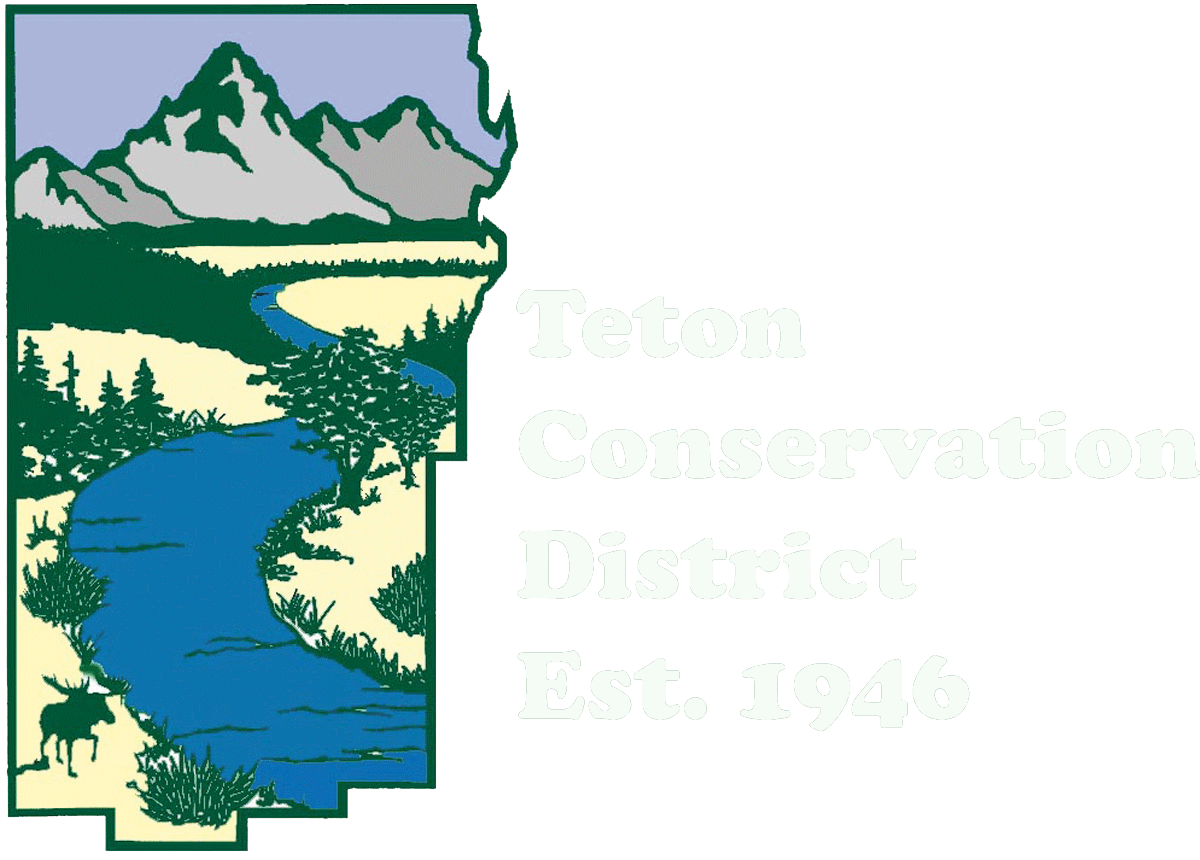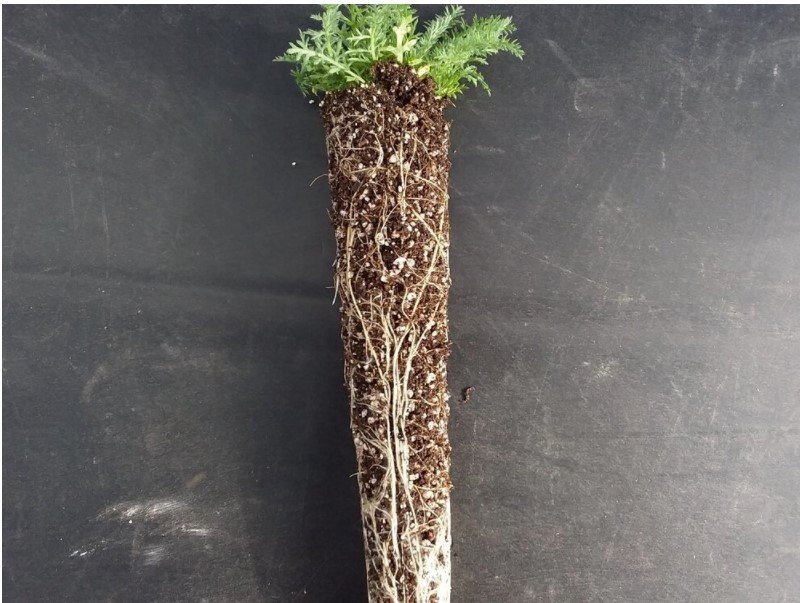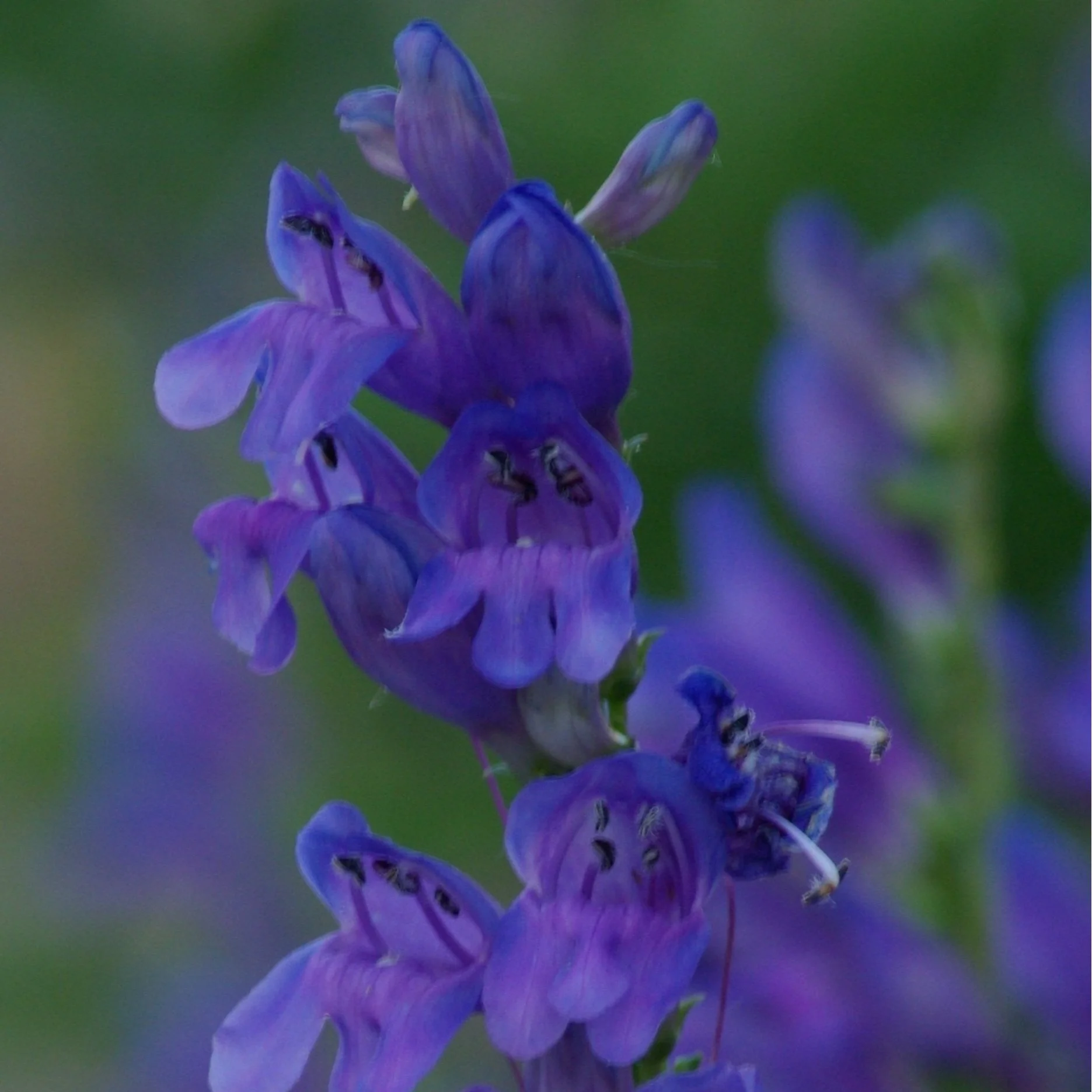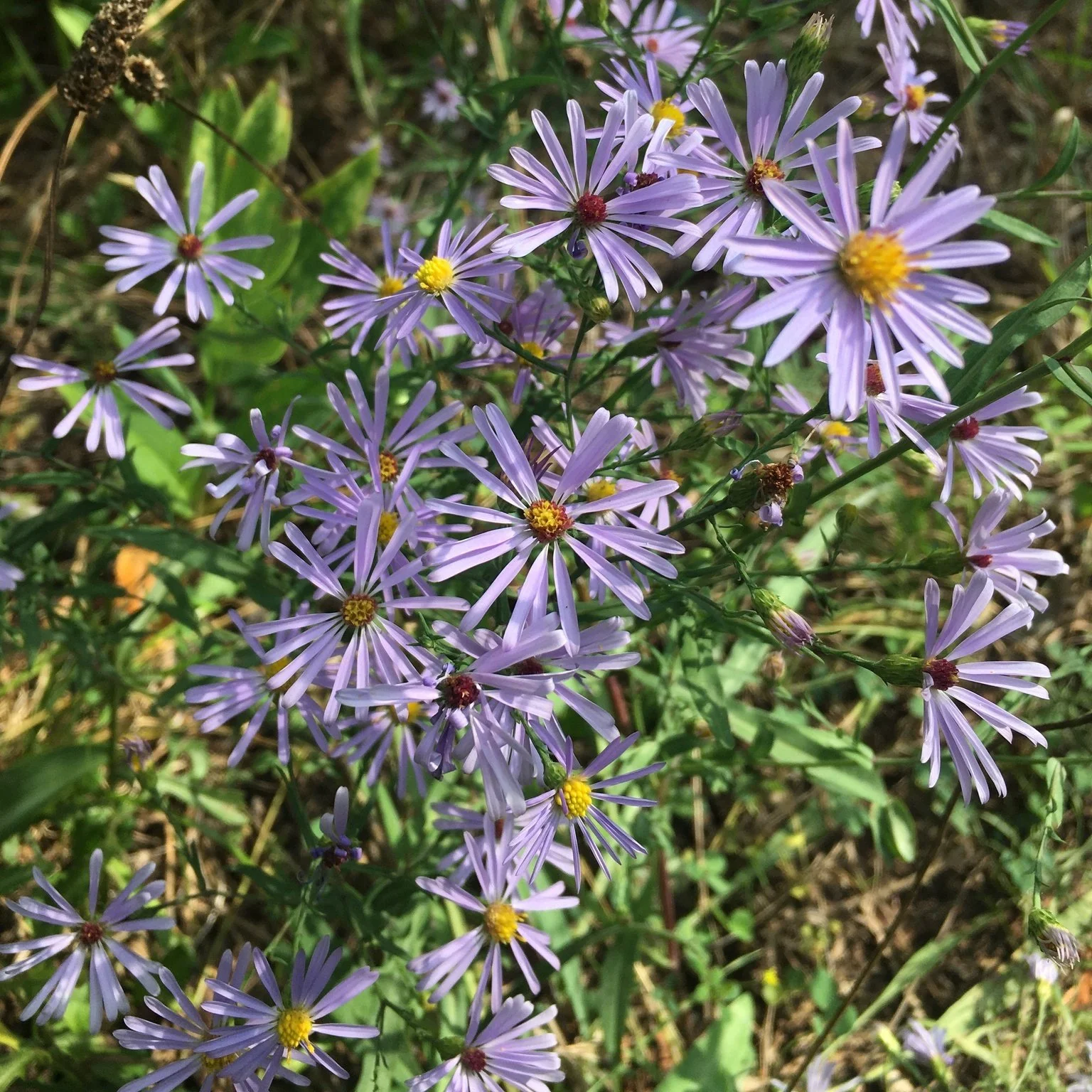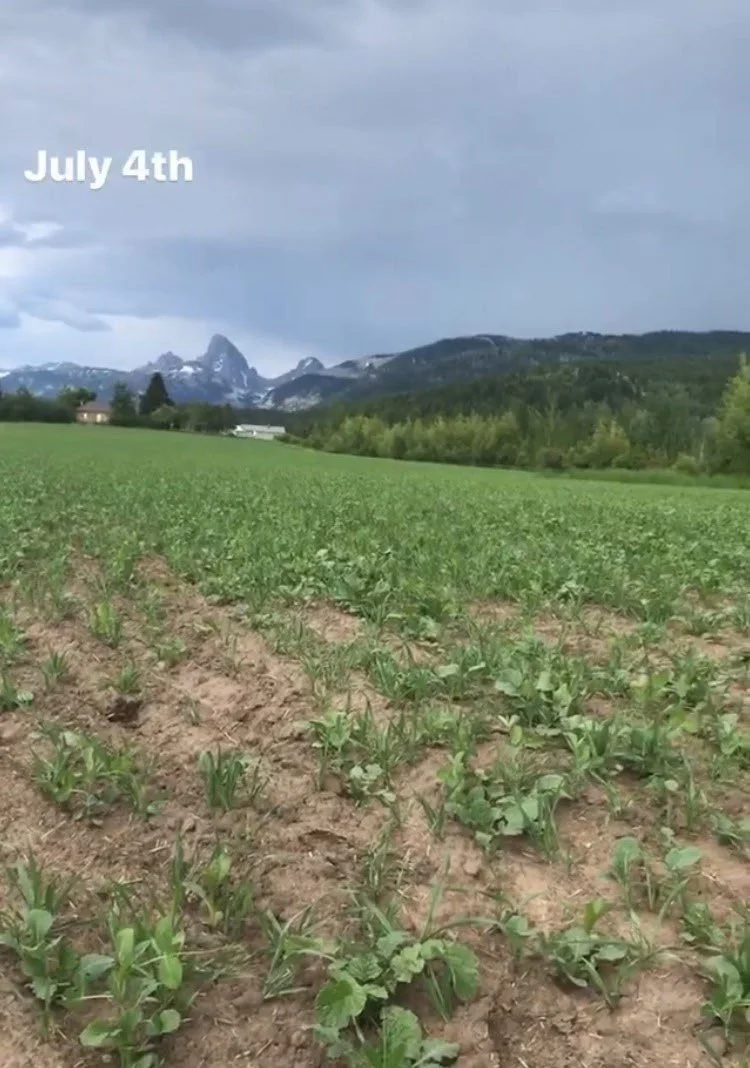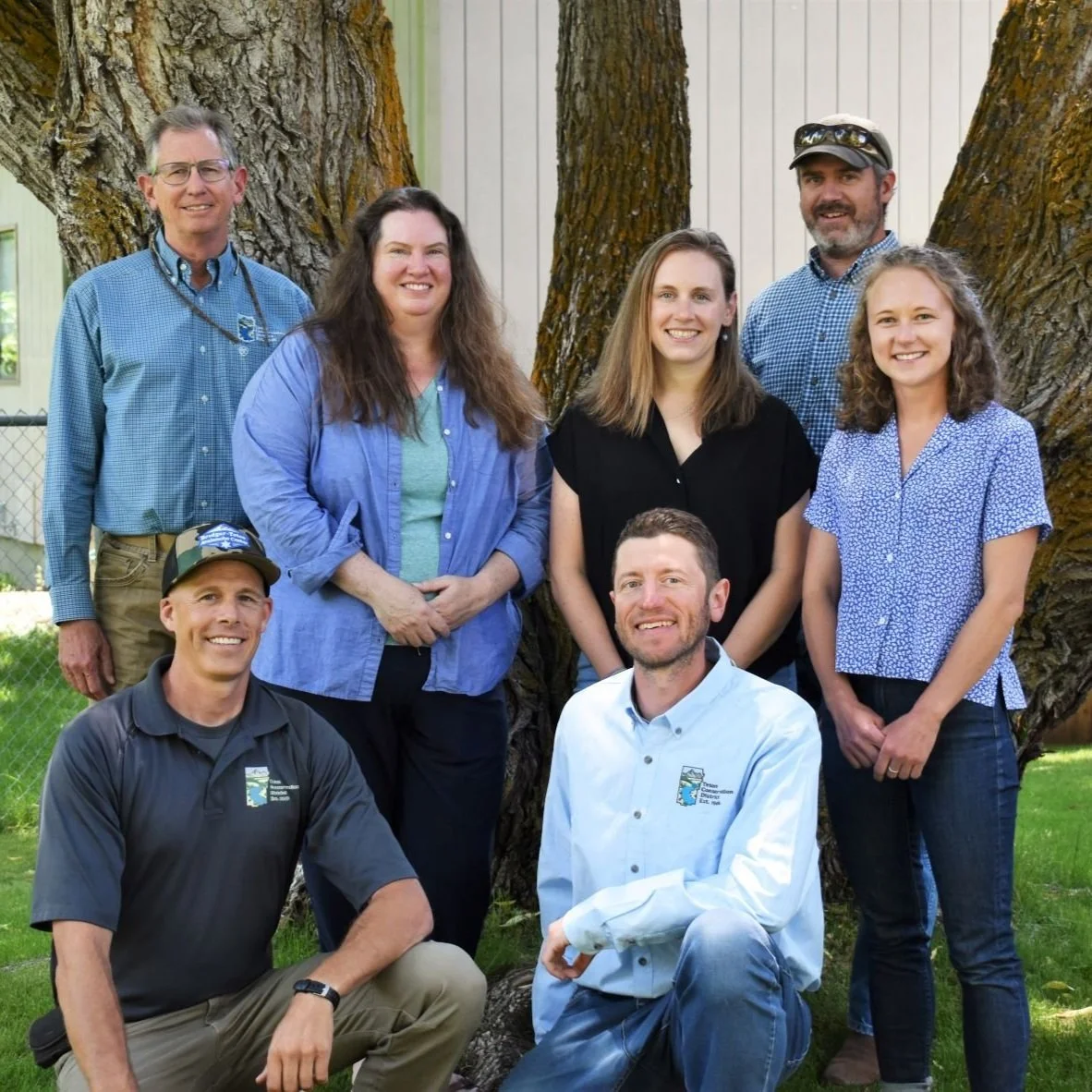Shhh…if you listen carefully, you might hear the bugs in Flat Creek talking to you. Just kidding, but only partially. Benthic macroinvertebrates (aquatic bugs) are “canaries in the coalmine” for stream health because these little bugs are sensitive to changes in water quality and stream habitat.
Emily Smith (left) and Carlin Girard (right) collect macroinvertebrate samples from Flat Creek.
Teton Conservation District uses a metric known as “EPT Richness” to assess stream health. EPT Richness is the abundance of three pollution-sensitive aquatic insect orders: Ephemeroptera (mayflies), Plecoptera (caddisflies), and Trichoptera (stoneflies).
Flat Creek is designated by the Wyoming Department of Environmental Quality as an “impaired waterbody” due to increased sediment loads. Fine sediment clogs the spaces between cobbles in a streambed, reducing available habitat for macroinvertebrates and spawning native Snake River fine-spotted cutthroat trout. Some macroinvertebrates simply cannot live in water laden with sediment. To keep tabs on the health of the creek, Teton Conservation District staff wade out into Flat Creek annually to collect macroinvertebrate samples. These bugs have told us a lot about the health of Flat Creek since data collection began in 1996.
It’s not all bad news! Since the installation of the Karns Meadow Stormwater Treatment Wetland in 2012, EPT Richness has steadily increased in Flat Creek. The constructed wetland—funded in part by Teton Conservation District—is designed to reduce sediment loads and polluted runoff from the town of Jackson. The wetland is doing its job quite well—after water moves through the wetland, it’s removed of about 90% of its contaminants! But in recent years, improvement in Flat Creek’s EPT Richness has slowed. One reason may be the above average water temperatures during the summer of 2021. We’re watching temperatures closely this year.
The plot above represents the number of species (or richness) of Ephemeroptera, Trichoptera, and Plecoptera (EPT) measured in Flat Creek since 1996. Teton Conservation District collects water quality and macroinvertebrate samples from Flat Creek as part of our annual sampling objectives.
There is much more work to be done to continue to improve water quality in Flat Creek. Teton Conservation District is supporting more water quality improvement projects, including the use of stormwater filtration units, on-site green infrastructure, and management of snow storage piles, all of which directly reduce the delivery of sediment to the creek.
What can you do to help? Chemicals, fertilizers, sediment, etc. that are deposited on our lawns, driveways, and roads ultimately run off into nearby creeks and rivers. Don’t let runoff from disturbed areas flow from your property. Consider what products you’re using and how they might impact waterbodies. Never dump things like oil, paint, or chemicals in the street or down a storm drain. Eliminate or reduce the use of fertilizer, pesticides, sand, salt, and harsh cleaning products. Our collective action can help improve water quality in Flat Creek.
